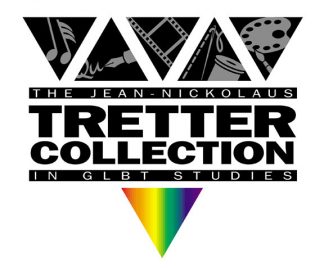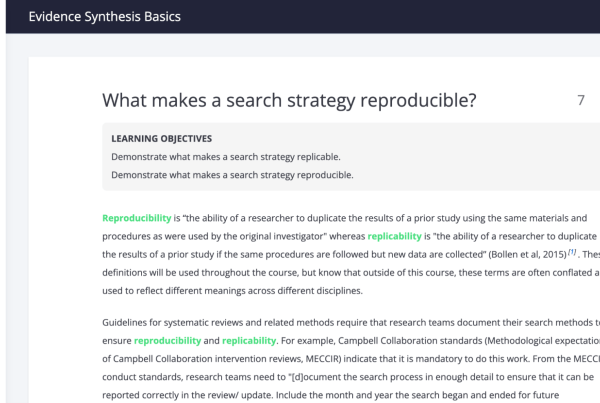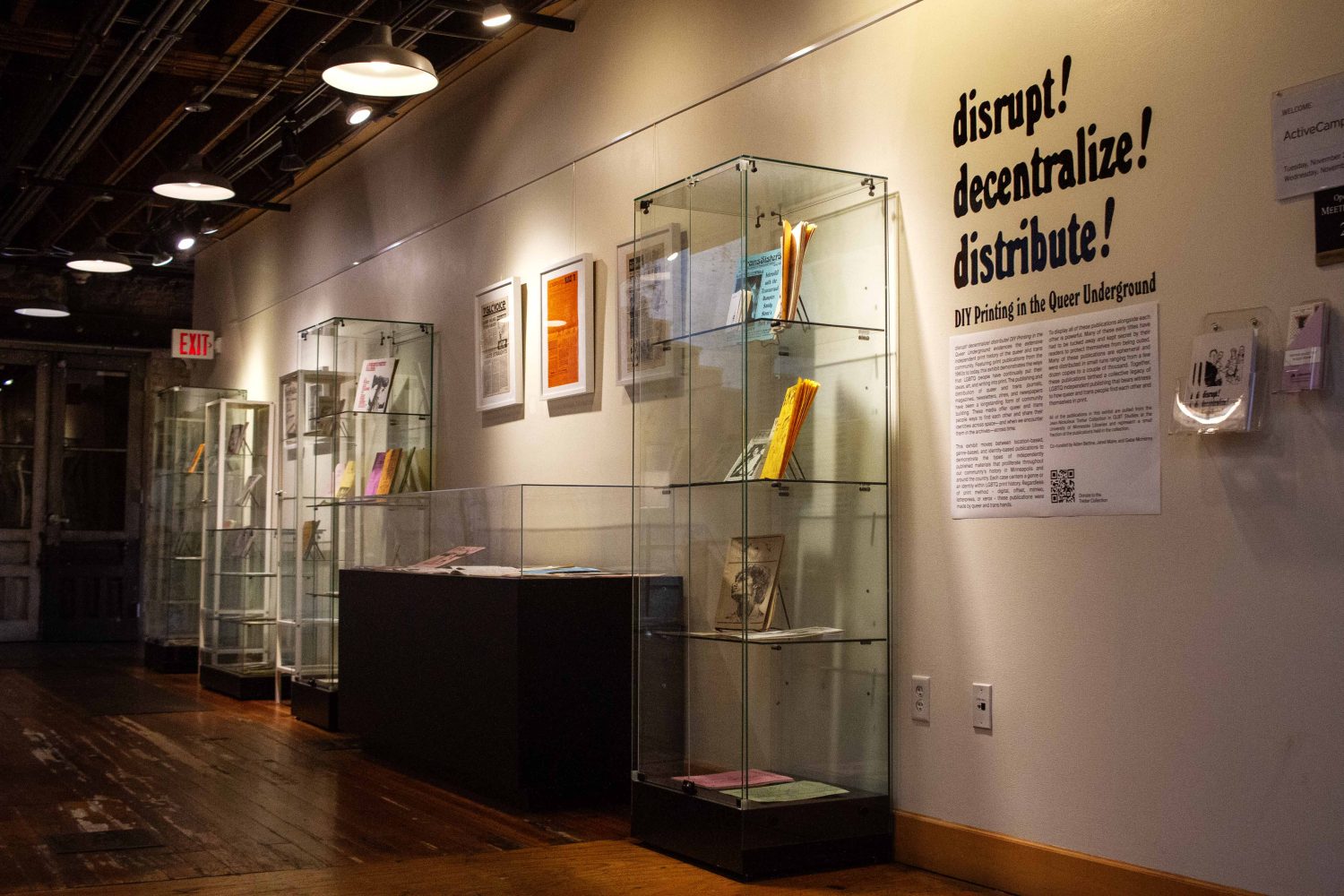
The Tretter Collection’s exhibit “disrupt! decentralize! distribute! DIY Printing in the Queer Underground” on display at Open Book in Minneapolis, on Wednesday, Nov. 29, 2023. (Photo/Adria Carpenter)
Fifty years ago, some of these zines were banned for obscenity. Today, they’re on display at Open Book.
The Tretter Collection’s latest exhibit – “disrupt! decentralize! distribute! DIY Printing in the Queer Underground” — documents the long history of LGBTQ print culture, as people shared their ideas and art, and built a community.
These independently-produced zines, magazines, journals, newspapers, and newsletters stretch back from the new millennium to the pre-Stonewall era, and reveal decades of activism and self-expression.
The exhibit coincided with the first annual Midwest Queer and Trans Zine Fest, held at Open Book, and co-hosted by the Tretter Collection and Late Night Copies Press. Together, the exhibit places current zine makers from across the region within a much larger history of independent LGBTQ publishing.
“We see queer print production today as part of this long legacy of DIY and independent printing in the community,” said Curator Aiden Bettine, who co-curated the exhibit alongside student worker, Gabe McHenry, and part-time staff, Jared Maire.
distribute!
The exhibit’s title, “disrupt! decentralize! distribute!,” represents the main goals and features of independent, LGBTQ publications.
Working backwards, this underground media was distributed on every scale, from short run zines passed around a friend group, to large, serialized, monthly magazines. There were one-man operations stationed in a garage or basement, to independent newspapers circulating in the thousands.
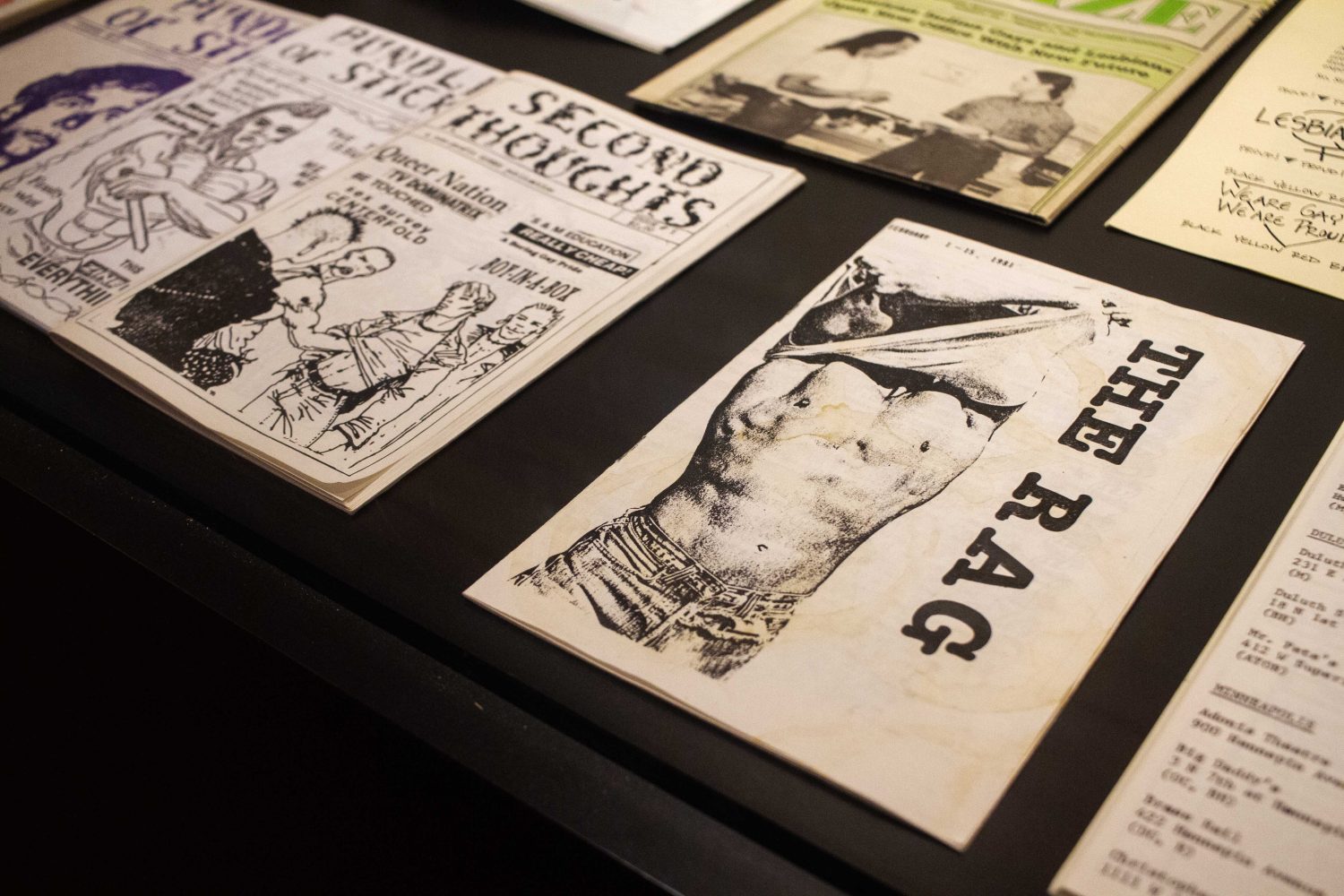
“The Rag,” published on February 1981, on display at Open Book in Minneapolis, on Wednesday, Nov. 29, 2023. (Photo/Adria Carpenter)
Likewise, the intended audience varied. Publications had local, regional, or national readership, and were tailored for either gay men, lesbians, bisexuals, trans people, or the whole community. But while scale and audience shifted, the intent didn’t. This media was about LGBTQ people, made by LGBTQ people, for LGBTQ people.
“It’s not meant for cis heteronormative consumption, and that’s blatantly clear,” Bettine said. “This is queer and trans media for queer and trans consumption.”
Local zines and publications would cover gay bars, upcoming events to follow, and in the case of the “Demure Butchness” zine issue #5, a Top 20 Men of Minnesota list (topping the list are “The Boys of Pizza Luce” for their short shorts, “Mamma Mia!”). Bettine also loves the lesbian feminist newsletter, “Blaze,” created by the University of Minnesota “University Lesbians.”

Issue No. 8 of the zine “My Comrade,” published in 1991, about the Gay ’90s bar in Minneapolis, on display at Open Book in Minneapolis, on Wednesday, Nov. 29, 2023. (Photo/Adria Carpenter)
Before the internet, LGBTQ people subscribed to these magazines and newspapers through mail order catalogs. And since many of these LGBTQ publications advertised in each other’s pages, readers discovered more and more print media.
In the 1970s, the rise of the feminist, lesbian, and gay bookstore movements provided a physical place to purchase these publications, outside of the postal subscription model, but more importantly, they created a comfortable environment to meet other like-minded people.
“That’s where gay and lesbian-owned bookstores become really quintessential, especially before the Internet,” Bettine said. “They became critical spaces.”
Outside of bookstores and mailboxes, zines and other media popped up at bars and underground shows, lined the counters of neighborhood coffee shops and record stores, and spread by word-of-mouth.
decentralize!
“Centralizing” often meant conforming to cisgender, heteronormative society, Bettine explained. LGBTQ people were the decentralized edges of print culture.
New technology and cultural shifts helped decentralize print publishing. When photocopiers hit the market in the 1960s, it made printing cheaper and more accessible, leading to an explosion of print production.
Now, people didn’t have to submit manuscripts to corporate publishers. They could use photocopies or mimeograph machines at work, the public library, or even a friend’s house. Lesbian women in particular were increasingly entering the workforce in secretarial roles and gaining access to office equipment.
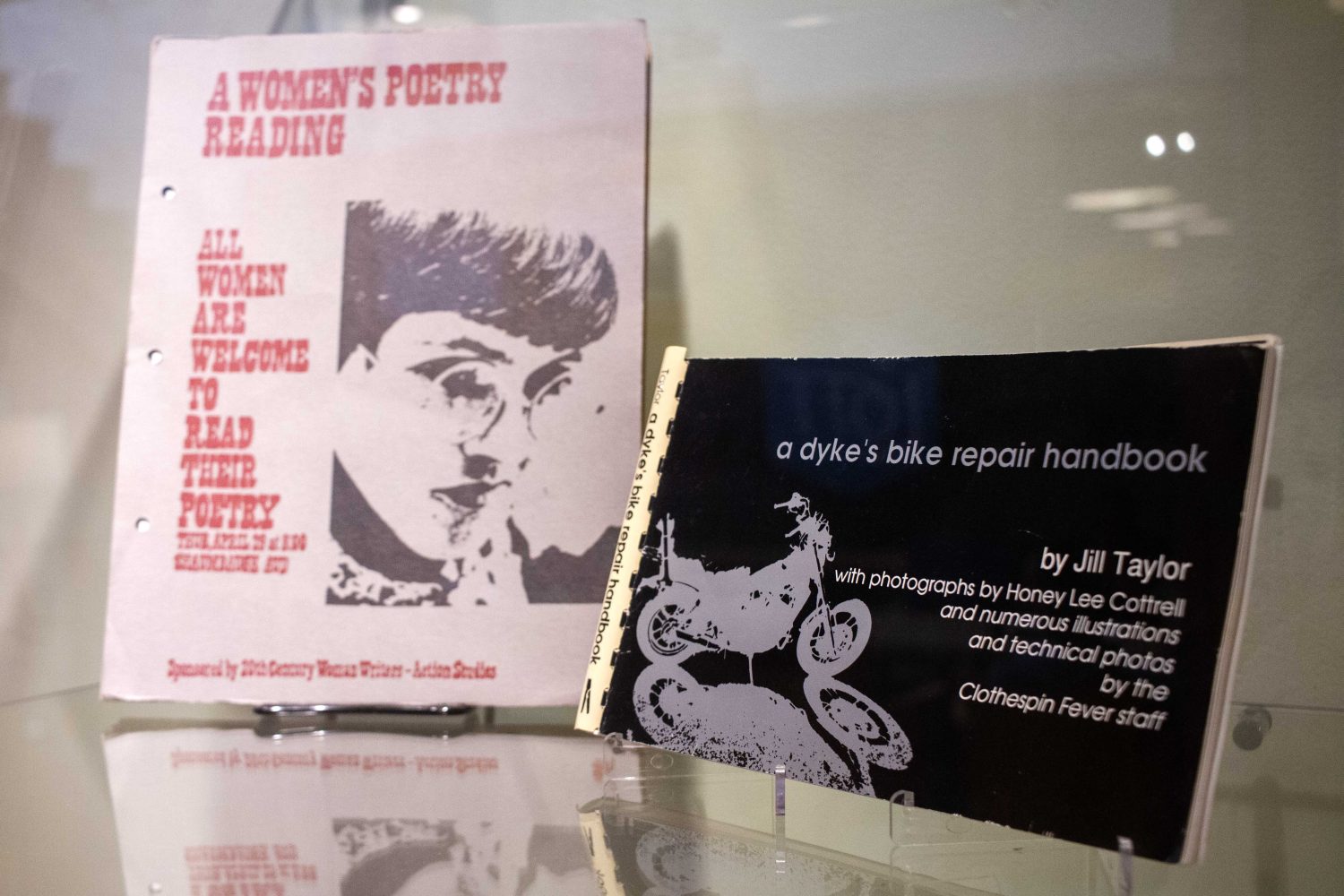
“a dyke’s bike repair handbook” by Jill Taylor, published in 1990, on Wednesday, Nov. 29, 2023. (Photo/Adria Carpenter)
By circumventing corporate publishers and the traditional gatekeepers of printed material – who reinforced a cis, heteronormative worldview – LGBTQ people could undercut the power of those institutions.
For example, the Iowa City Women’s Press, started in a converted garage in 1972, became a hub for lesbian and feminist periodicals from across the country. In the 1980s, it was the only women-owned and-operated press and bindery in America.
The Iowa City Women’s Press represents another aspect of decentralization. Unlike other organizations, the press didn’t institute a top-down hierarchy structure. Many LGBTQ publications followed an egalitarian, cooperative approach to organization.
disrupt!
As LGBTQ people advocated for their rights and broadcasted their ideas and perspectives, it disrupted mainstream society.
The exhibit showcases 100 different print publications. Some of those were, and still are, deemed legally “obscene” by the United States Postal Service, and were banned from distribution by mail.
The content of these materials weren’t literally disturbing or negative. But they displayed a deep comfort with sex and sexuality, with consent and bodily autonomy, with gender expression and experimentation, that often shocked the more conservative, heteronormative crowd.
For Bettine, the exhibit encourages people to think, “Who can see what? How can it be shared, if it all?”
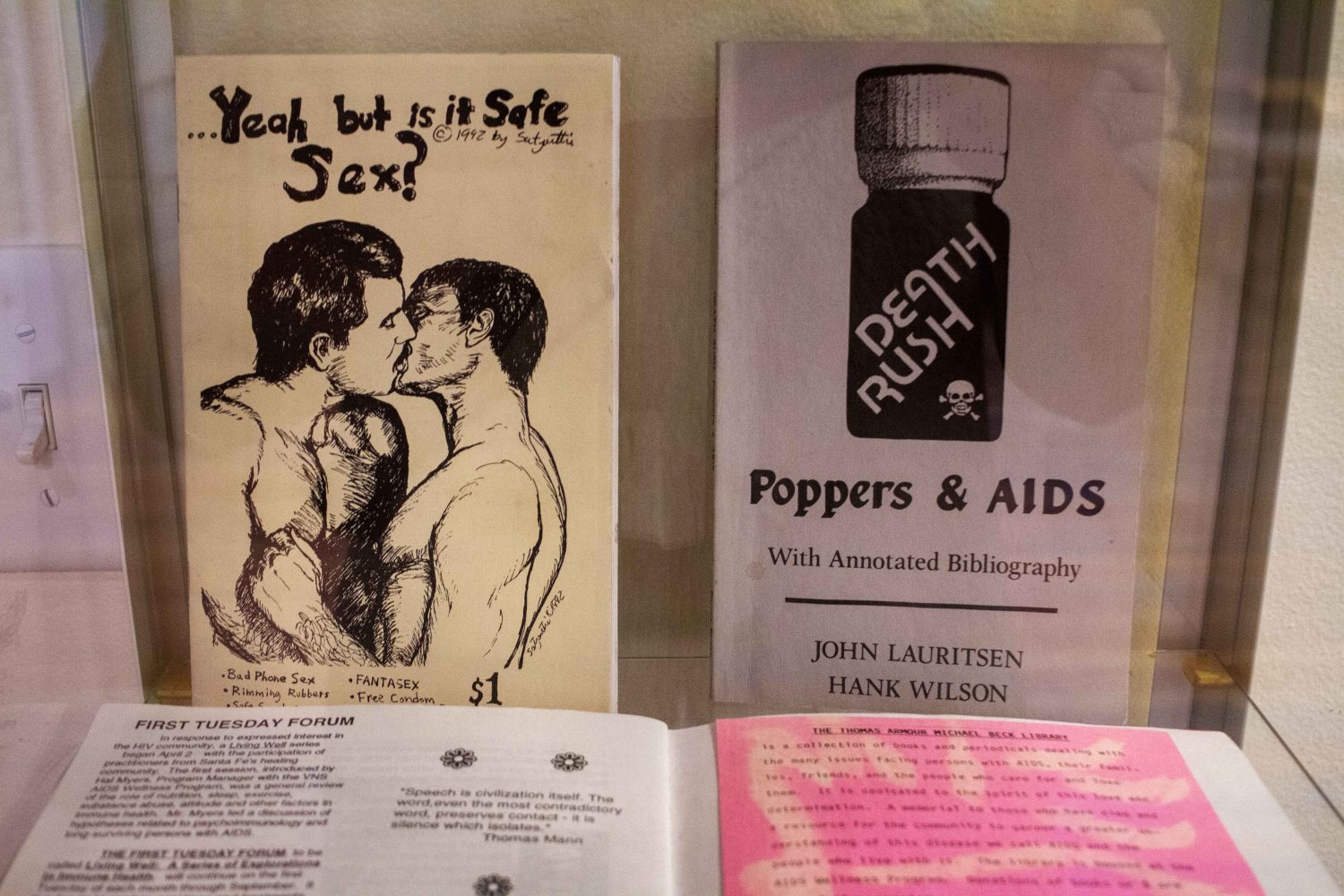
A collection of publications about HIV/AIDS, safe sex, and drug use, on display at Open Book in Minneapolis, on Wednesday, Nov. 29, 2023. (Photo/Adria Carpenter)
“We see queerness and queering as an action or a verb, ‘to queer’ something. And that often leads to some kind of disruption,” he said.
Disruption, however, came with risk. A major feature of ’50s and ’60s LGBTQ print culture was anonymity. Many publications were reader-written, publishing submissions of essays, poems, fiction, and more. Fearing discrimination, some authors used pseudonyms or pen names to protect their identities.
“There’s some sense of ‘How do we protect the community? And how do we protect ourselves, but still have this culture?’” Bettine said. “There’s a lot of secrecy in early queer print.”
Today’s zine scene
Post-widespread Internet adoption, today’s print landscape has changed but never died out.
Zines, for example, have been around for almost a century, and now are only more discoverable and easier to create. People sell their zines on Etsy, their personal website, Instagram, and so on. With increasing screen time, digitization, and pandemic-induced isolation, readers yearn for physical media.
“There’s a deep hunger for analog material, and being able to hold something, and have that tactile experience, and flip through things,” Bettine said. “It’s weird to feel like we’re in some kind of zine print resurgence because at the same time they have never gone away. This has been a critical form of information and resource sharing, personal storytelling, and connecting, literally for decades.”
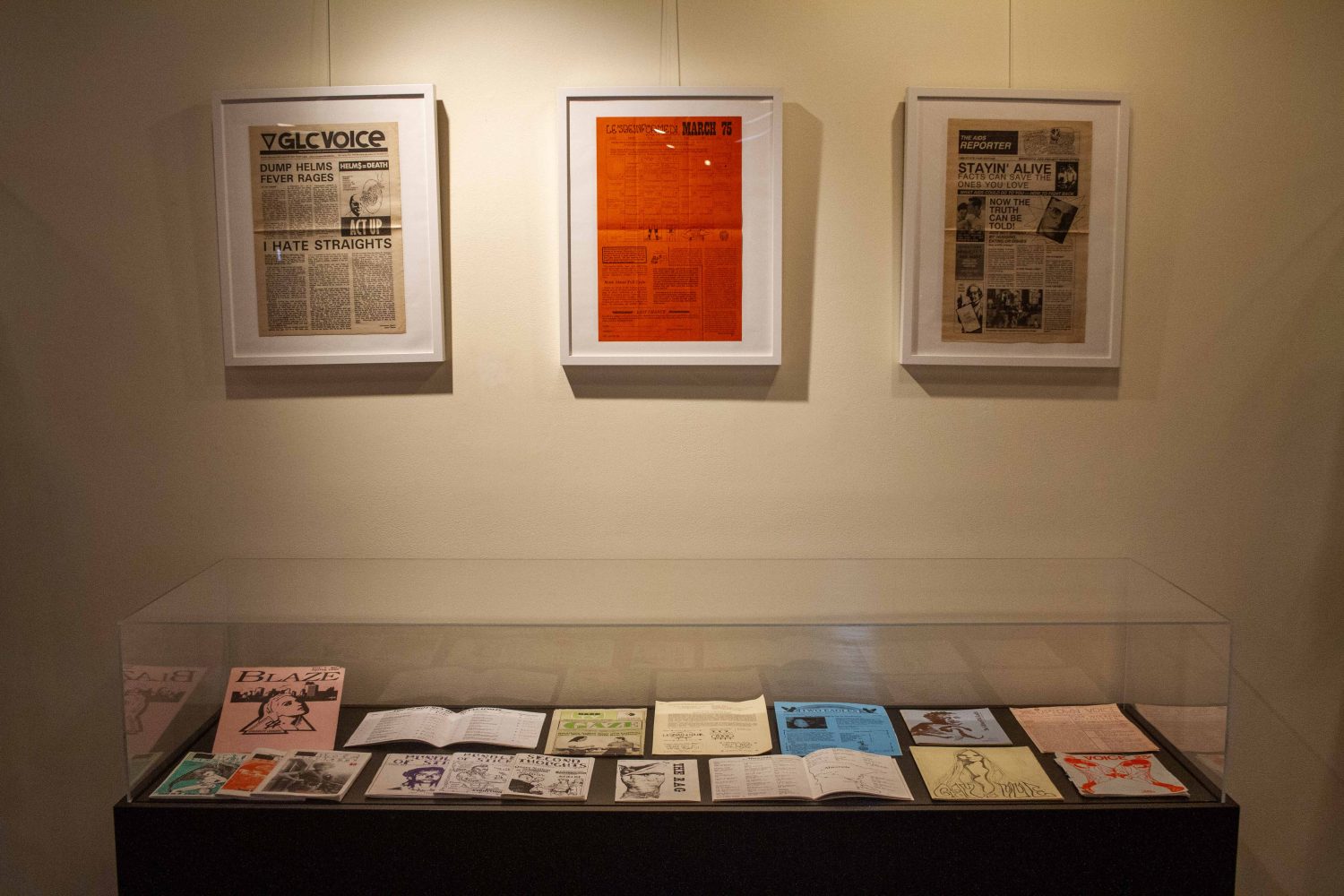
The Tretter Collection’s exhibit “disrupt! decentralize! distribute! DIY Printing in the Queer Underground” on display at Open Book in Minneapolis, on Wednesday, Nov. 29, 2023. (Photo/Adria Carpenter)
At the Zine Fest, Bettine found a how-to zine for getting a testosterone prescription refilled, which speaks to the current concerns among trans people about gender-affirming health care and hormone access. Zines have always reflected what we can imagine and create, but also what we need.
“A zine, in terms of its content, can really be anything. There are no parameters. The world has always been that wide,” Bettine said. “Zines don’t have the same rules of other publications. Zines break copyright all the time. … Zines are a lot of fun because of that bent of rule breaking.”
Backwards connections
Bettine hopes “disrupt! decentralize! distribute!” will be an open invitation to visit the Tretter Collection. Putting these publications behind a glass case almost runs counter to their purpose, he said. It becomes an object to stare at, rather than read.
“One of the hardest things about this exhibit is all of a sudden putting all this incredible print media into a case where nobody can flip through it. And that’s the joy of the archives,” Bettine said. “You want to read this publication? Come to the Tretter.”
During the Zine Fest, people were shocked by how much LGBTQ print matierals existed before Stonewall. The oldest item in the exhibit is a 1964 issue of “Transvestia,” a magazine for transfeminine people that was first published in 1960.
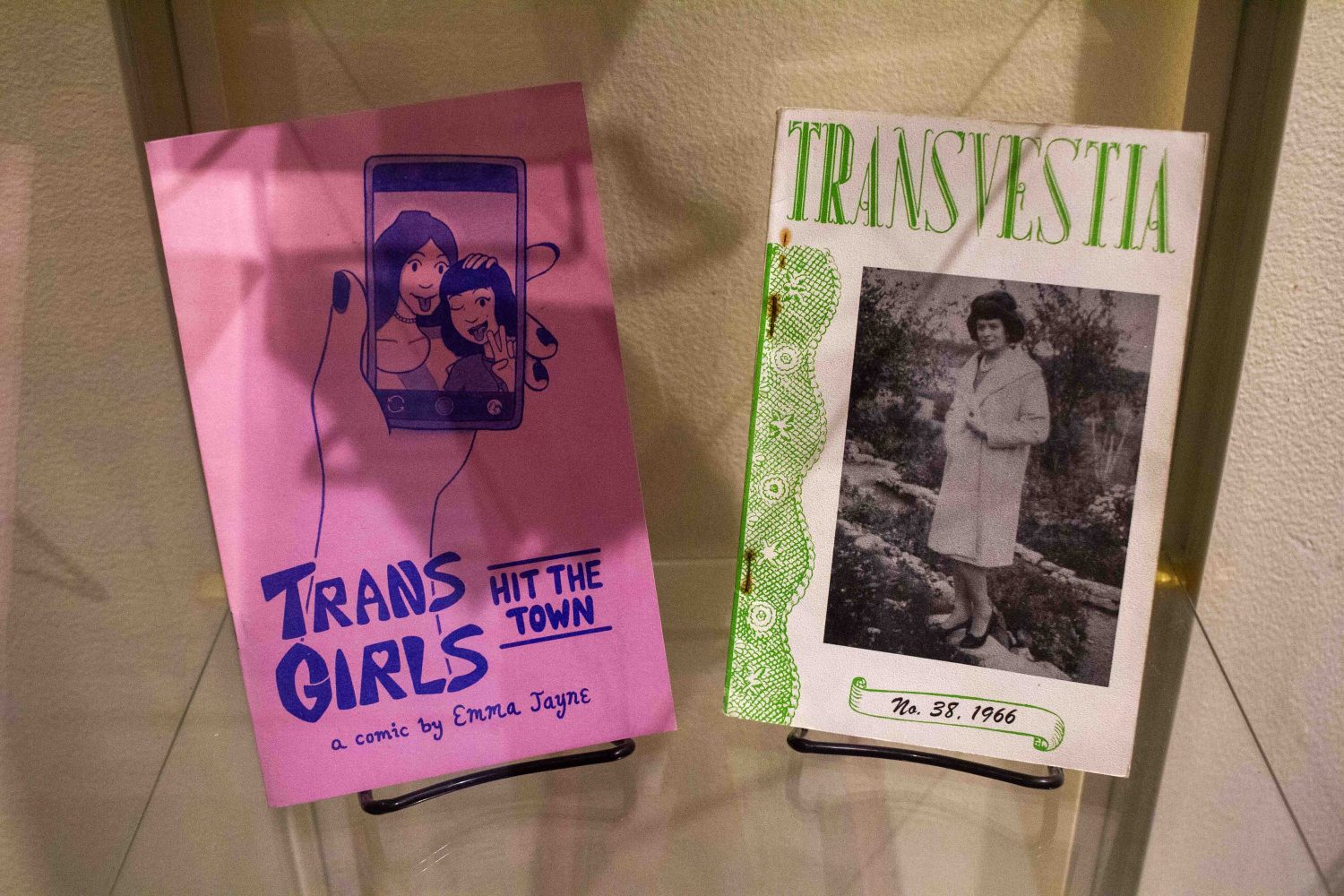
“Trans Girls Hit The Town” by Emma Jayne and Issue No. 38 of “Transvestia,” published in 1966, on display at Open Book in Minneapolis, on Wednesday, Nov. 29, 2023. (Photo/Adria Carpenter)
That backwards connection – that queer people decades ago shared the same problems and concerns – is an unparalleled experience for LGBTQ people today.
“It’s amazing to see that affinity piece over time,” Bettine said. “It really just screams out when you’re looking through a bunch of queer print material together.”
Other visitors at the Zine Fest told Bettine, “I remember when this publication came out. I have a copy,” or “I used to illustrate for this publication.” That’s the value of holding an exhibit off campus, he commented. If you want to interact with the community, meet them where they’re at.
Exhibit details
The exhibit is on display on the second floor of Open Book until Dec. 31, 2023. The space is open 9 a.m. to 9 p.m. Tuesday through Friday, and 9 a.m. to 6 p.m. Saturday through Monday.
For people interested in reading these publications, email abettine@umn.edu to set an appointment to browse the collection. To find local zines in the Twin Cities, Bettine recommends Moon Palace Books, Boneshaker Books, the Minnesota Center for Books Arts at Open Book, the Hennepin County Library, and the East Side Freedom Library.
“Ask your friends. Find out who has a zine collection,” he said.
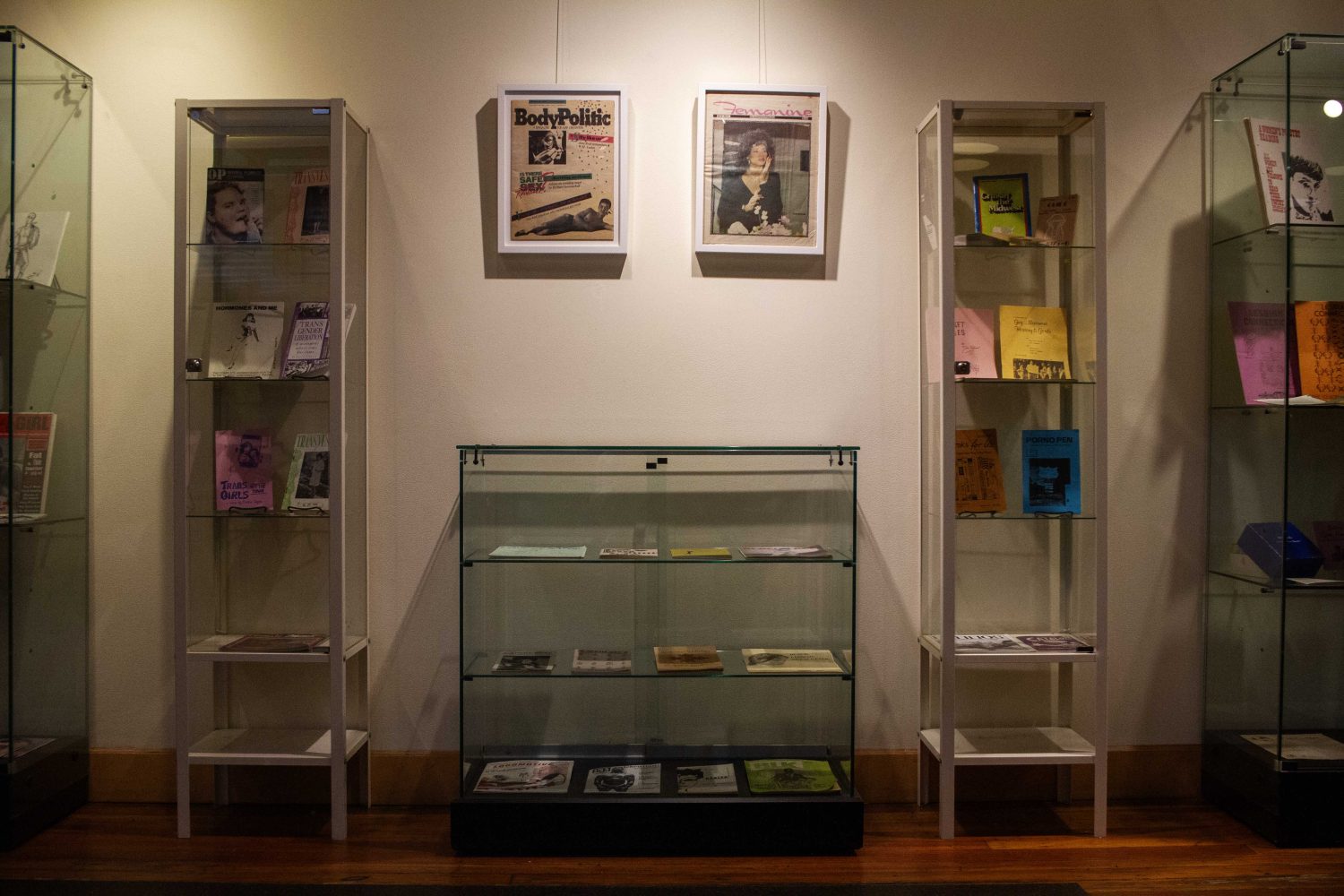
The Tretter Collection’s exhibit “disrupt! decentralize! distribute! DIY Printing in the Queer Underground” on display at Open Book in Minneapolis, on Wednesday, Nov. 29, 2023. (Photo/Adria Carpenter)
For online zine shopping, visit Justseeds, Wasted Ink Zine Distro, Quimby’s Bookstore in Chicago and New York City, and Printed Matter.
The Tretter Collection will also be holding a series of zine-making workshops throughout 2024, which will be free and open to the public. The workshops will be hosted by eight local artists and zine makers, and will teach people the basics of zine production.



